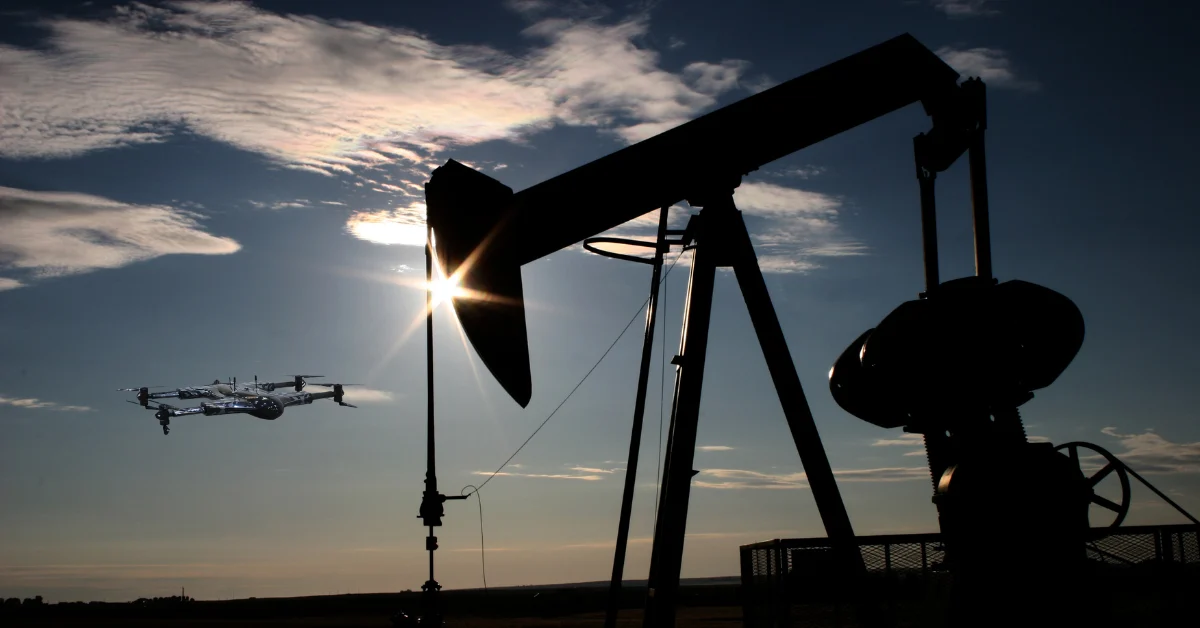Oil and Gas Drone Inspection
Drones Are Transforming Oil and Gas Inspections
Oil and gas infrastructure inspection has never been easy. Workers must climb flare stacks, enter confined spaces, or travel long distances to inspect pipelines. This process is risky, costly, and labor intensive. This is why more companies opt for oil and gas drone inspections to get the work done safer and more efficiently.

A Better Way to Inspect Pipelines
Pipelines span miles, frequently traversing rugged topography or isolated regions. Detecting leaks or structural damage can take days — unless you have drone pipeline inspection in place.
With pipeline inspection drones, you can scan for issues like corrosion, gas leaks, and structural damage in minutes. Drones with thermal imaging, like the ZenaDrone 1000, detect temperature changes that signal potential leaks and precisely identify problem areas;. And because these inspections don’t require shutting down operations, you can avoid costly downtime.
Keeping Workers Safe with Oil and Gas Drones
Safety is a constant concern in the industry. Why? Workers face exposure to hazardous gases, extreme heat, and unstable structures. Oil and gas drones take on dangerous tasks and reduce the need for people to enter risky environments.
Drones in oil and gas industry, such as the ZenaDrone 1000, can help mitigate these risks and can:
- Inspect limited spaces, conduct corporate research, and survey the physical integrity of pipelines.
- Reduce workplace hazards and drone inspection costs while increasing efficiency.
Reducing Costs Without Cutting Corners
Manual inspections are not just dangerous—they’re expensive. Why? Getting a team on-site, setting up equipment, and going through safety protocols takes time. Gas drone inspections streamline the process, cutting costs while maintaining high safety and accuracy standards.
With the ZenaDrone 1000, companies can:
- Lower labor costs by reducing the need for large inspection crews.
- Reduce downtime since inspection time is shorter and do not disrupt operations.
- Catch minor issues early and prevent expensive repairs down the line.
Emergency Response and Environmental Protection
Every second counts when an oil spill, gas leak, or fire breaks out. Drones in the oil and gas industry provide immediate aerial views and help response teams assess the situation quickly.
With thermal sensors and high-resolution cameras, our drones can:
- Pinpoint the exact location of a gas leak or pipeline rupture.
- Identify heat signatures to detect fires or overheating equipment.
- Help teams navigate hazardous areas without putting workers in harm’s way.
The Future of Drone Technology in Oil and Gas
As ZenaDrone’s technology progresses, inspections will become increasingly precise. AI-powered analytics, autonomous flight paths, and real-time data processing will make oil and gas drone inspections essential for daily operations.
For companies aiming to enhance safety, efficiency, and cost-effectiveness, investing in drone inspections is not merely a trend; it represents the future.
